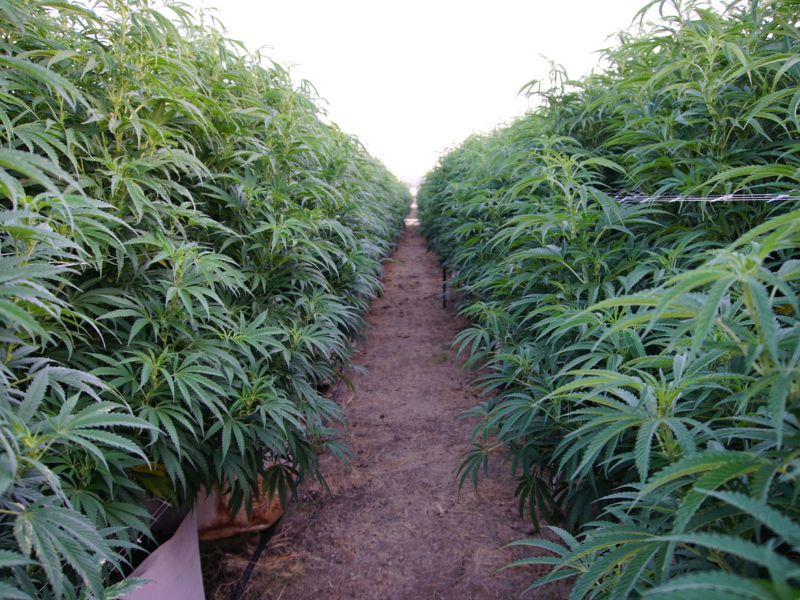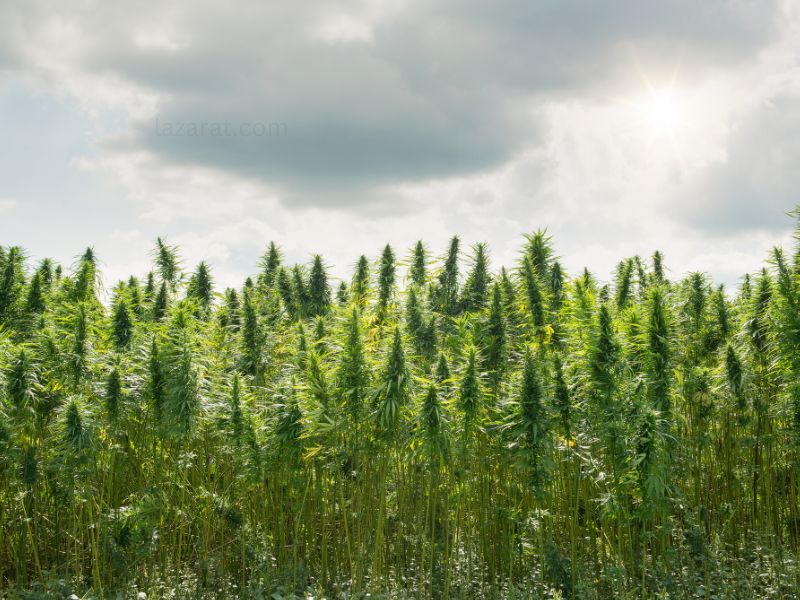Exploring the Cannabis World
Cannabis plants exhibit a captivating array of sizes and shapes, offering unique characteristics and growth patterns. In this article, we’ll reveal the tallest cannabis plant and explore the factors that contribute to plant height. We will also delve into the benefits and challenges of cultivating these lofty specimens, discuss hybrid strains, and provide insights into choosing the right strain for your needs.
Sativa versus Indica: Height Comparison
When comparing the heights of Sativa and Indica cannabis plants, it is essential to examine their distinct growth patterns, which result from their genetic makeup and adaptations to their native environments.
Sativa plants originate from equatorial regions like Southeast Asia, Africa, and Central and South America. These areas provide ample sunlight and warm temperatures year-round, enabling Sativa plants to grow taller. Sativa plants have evolved to maximize their exposure to sunlight by developing a lanky, tree-like structure. They can reach heights of up to 20 feet (6 meters) or more, depending on the specific strain and environmental conditions.
The tall, slender structure of Sativa plants allows them to dissipate heat more effectively, preventing damage from excessive heat and light. They possess thin, elongated leaves and a lighter green hue, with internodal spacing that is more prominent than in Indica plants. This spacing facilitates better airflow, reducing the risk of mold and pests.
Indica plants, on the other hand, originate from regions with harsher climates, such as the Hindu Kush mountains in Afghanistan and Pakistan. These areas have cooler temperatures, shorter growing seasons, and less consistent sunlight. As a result, Indica plants have evolved to be shorter and bushier, with heights typically ranging from 2 to 6 feet (0.6 to 1.8 meters).
Indica plants have broader leaves and a darker green color, which helps them absorb more sunlight in their native environments. Their compact structure allows them to retain heat more efficiently and withstand colder temperatures. Additionally, the shorter stature and denser foliage of Indica plants help protect against wind damage and make them better suited for discreet outdoor growing or indoor cultivation.
Sativa plants generally grow taller than Indica plants due to their adaptations to equatorial climates with abundant sunlight and warmth. Sativa plants can reach heights of up to 20 feet (6 meters) or more, while Indica plants typically grow between 2 and 6 feet (0.6 to 1.8 meters). These differences in height are a result of genetic and environmental factors that have shaped the growth patterns of these cannabis subspecies over time.

Introducing Hybrid Strains
Hybrid strains combine characteristics from both Sativa and Indica subspecies. These plants can exhibit varying heights depending on their genetic makeup. Some hybrids may lean more towards Sativa traits, growing taller, while others may resemble Indica plants in height and structure. Hybrids offer growers the opportunity to select plants with a balance of characteristics, potentially harnessing the height of Sativa strains while maintaining the manageable size of Indica varieties.
Factors Affecting Cannabis Plant Height
Various factors can influence the height of cannabis plants, including genetics, environmental conditions, and cultivation techniques. These factors work together to determine the final height of the plants.
Genetics plays a crucial role in determining the height of cannabis plants. The genetic makeup of a plant determines its inherent growth pattern, which includes its potential height. Sativa strains naturally grow taller due to their genetic predisposition, while Indica strains tend to be shorter and bushier.
Environmental factors such as climate, temperature, and light exposure have a significant impact on cannabis plant height. For example, Sativa plants thrive in warm, tropical climates, where they can receive ample sunlight to fuel their growth. In contrast, Indica plants can grow in cooler climates, with their shorter stature and denser foliage helping them retain heat and moisture.
Light exposure is another vital factor affecting a plant’s height. Cannabis plants require a specific light spectrum to grow and flower properly. Insufficient light can cause plants to stretch and grow taller as they search for a light source, while excessive light can hinder vertical growth and result in shorter plants.
The height of cannabis plants is influenced by a combination of genetic, environmental, and cultivation factors. Genetics lay the foundation for a plant’s inherent growth pattern, while environmental conditions like climate and light exposure can significantly impact plant height. Additionally, growers can employ various cultivation techniques to manage plant size and promote optimal growth habits.

Benefits of Growing Taller Cannabis Plants
Cultivating taller cannabis plants has several advantages. Taller plants generally produce more buds, leading to higher overall yields. This is especially true for outdoor growers, who can fully harness the plants’ growth potential. The height of Sativa plants allows for better sunlight absorption, resulting in vigorous growth and potentially higher cannabinoid and terpene production. Additionally, Sativa plants’ height can provide some pest resistance, as many pests struggle to climb the taller stems.
Challenges of Growing Tall Plants
Growing taller cannabis plants also presents unique challenges. These include increased space requirements, which can be especially problematic for indoor growers with limited space. Taller plants can be more difficult to conceal, posing a problem for outdoor growers in areas with strict regulations or where discretion is necessary. Furthermore, their height makes them more susceptible to wind damage, requiring additional support structures to prevent snapping or bending.
Mastering Techniques for Taller Cannabis Plants
To grow taller cannabis plants effectively and maximize their potential, growers can employ specific cultivation techniques that help manage plant size and shape while optimizing yields. Here are some common techniques that can be used for this purpose:
- Topping: Topping is a method that involves cutting off the top growth tip of a cannabis plant, promoting the development of multiple primary branches. This technique not only helps control the height of taller plants but also increases overall yields by encouraging more bud sites to form.
- Pruning: Regularly trimming excess foliage and growth tips can help control a plant’s height while promoting bushier growth and higher yields. Pruning allows for better airflow and light penetration, which are essential for healthy growth and abundant yields.
- Low-Stress Training (LST): LST is a gentle technique that involves bending and tying the plant’s branches to encourage horizontal growth. By spreading out the branches, LST helps control plant height while increasing light exposure and overall yield. This method is particularly useful for indoor growers with limited vertical space.
- High-Stress Training (HST): HST techniques, such as supercropping and mainlining, involve more aggressive manipulation of the plant’s branches to control height, improve structural strength, and optimize yield. Supercropping involves carefully bending and pinching branches to create knuckles or stress points, which then heal and become stronger, while mainlining involves creating a symmetrical structure with an even distribution of branches.
- Screen of Green (SCROG): The SCROG method is a popular technique for growing taller plants indoors. It involves weaving the plant’s branches through a horizontal screen or net, encouraging horizontal growth and maximizing light exposure. This method helps control height, provides support for heavy branches, and can lead to improved yields.
- Light Management: Proper light management can help control the height of cannabis plants. Using the right light spectrum, intensity, and duration can encourage healthy growth without excessive stretching. Growers can also adjust the distance between the light source and the plant canopy to help control vertical growth.
- Nutrient Management: Providing the appropriate nutrients at the right stage of growth can also influence plant height. Excessive nitrogen during the vegetative phase can lead to excessive stretching, while inadequate phosphorus and potassium during flowering can limit overall growth and yield.
- Container Size: The size of the container in which the cannabis plant is grown can also affect its height. Smaller containers may limit root growth, leading to smaller, more compact plants.
By mastering the above techniques, growers can effectively manage the size and shape of their taller cannabis plants while optimizing yields. It is essential to understand each technique’s purpose and application, as well as the specific needs of the chosen cannabis strain, to achieve the best results.
“Growing taller cannabis plants can result in higher yields and better light utilization, but it’s important to understand how to manage their height and structure for optimal results. Mastering techniques such as topping, pruning, and low-stress training can make all the difference in producing healthy, productive plants,” says Kyle Kushman, a renowned cannabis cultivator and educator.
The Tallest Cannabis Plant
The tallest cannabis plants typically belong to the Sativa subspecies, reaching heights of up to 20 feet (6 meters) or more under ideal conditions, such as the 25-foot (7.6-meter) plant grown in British Columbia. These impressive plants offer higher yields and better sunlight exposure but also present challenges like increased space requirements and wind sensitivity.
By understanding the factors influencing cannabis plant height and implementing proper cultivation techniques, like topping, pruning, LST, and SCROG, growers can harness the potential of these towering beauties. With knowledge and expertise, cultivators can reap the rewards of growing the tallest cannabis plants while overcoming the challenges they present.
In addition to Sativa and Indica plants, hybrid strains offer a middle ground, combining traits from both subspecies. Growers should consider factors such as desired effects, flavors, and cultivation requirements when choosing the right strain for their needs.
By carefully selecting strains and employing effective cultivation techniques, growers can make the most of the diverse world of cannabis, whether they’re aiming for the tallest plants or seeking a more modest size.
© 2022-2023 by Lazarat.com, a LIVenture LLC.
All rights reserved. No part of this document may be reproduced or transmitted in any form or by any means, electronic, mechanical, photocopying, recording, or otherwise, without prior written permission of LIVentures LLC.

Leave a Reply